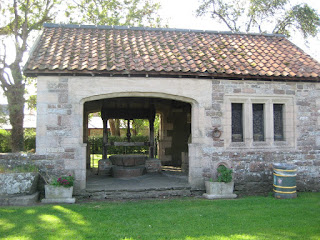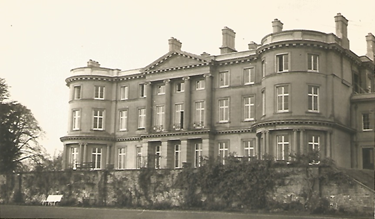The Magical Marshlands of Monmouthshire by Mary Evans
The Magical Marshlands of Monmouthshire
by Mary Evans
As our world has become smaller and our travel plans restricted our local area has taken on a new focus and significance. For many of us this has led to rediscovering locations we haven’t visited for a long while or even better, discovering a new place of interest on our doorstep. Here in Monmouthshire we have beautiful countryside supporting a wide range of wildlife and although not as long or scenic a coastline as our neighbouring Glamorgan Heritage Coast, we do have the fascinating area of the Gwent Levels.
These stretch east of Cardiff to Chepstow alongside the splendid Severn Estuary and are an intriguing mixture of heritage, mystery and tradition. An ancient land of ditches, dinosaur footprints, religious places, salmon fisheries, skeletal boat remains, tiny islands and now sculptures. Over several sunny days in September with my husband as driver and navigator we explored new locations and revisited others in the Levels.
Depending on which area of Gwent you live they are known as the moors or the flats or in my family as the reens. The description I like best is ‘a piece of land made by the sea’ from Neville Waters, a third generation local farmer, in his contribution on the Living Levels website to life on the levels. [1]
Growing
up on the west side of Newport BC (before my family had a car) we would walk, not
always without complaint from my sister and myself, several miles to our nearest ‘seaside’ at West Usk Lighthouse, St
Brides near the outskirts of Newport. This photograph looking across to that
Lighthouse, now a smart B&B, was taken on our recent walk at Newport Wetlands.
Decades later in 2004 my husband and I were amongst hundreds of people who witnessed on this shore the very sad and rare sight of the carcass of a 60ft fin whale washed up on the mudflats before it was cut up and removed.
Knowing less of the east levels we set off to make our first visit to Black Rock near Portskewett to see the first sculpture, the Fisherman, to be completed in a series of six on the Levels Sculpture Trail, Living Levels Project.
 |
| Mary Evans Sept 20202 |
Black Rock, seen here in my photograph below, was part of the mainland but now lies out in the Channel with a light standing on it. This is the site of one of two crossing points between England and Wales which for centuries have been ferrying passengers across the Severn. The Living Level website tells us that the earliest recorded regular ferry crossing was from 1131 used by the monks at Tintern Abbey between Aust and Beachley
The website adds that :
Black Rock has been a crossing point between England and Wales for centuries; Roman coins found in the mud along the foreshore were probably thrown into the water as an offering to the gods for a safe passage. Both of these ferry crossings were dangerous; travellers in the 18th century would often take the longer land route via Gloucester rather than risk the crossing passage.
Fred Hando tells the tale of the drowning of a party of Cromwell’s soldiers trying to cross from Black Rock in pursuit of the King on 23rd July 1645. [2]
Both ferry crossings competed for many years until their closure in 1886 when the building of the Severn Tunnel made them redundant. The service from Beachley to Aust was revived in the 1920s and a car ferry service maintained until the opening of the Severn Bridge in 1966.
Travelling west from Black Rock you reach the village of Goldcliff which after many years we revisited on another sunny September day to walk the seawall. The coastal plain here was reclaimed from the sea by the Roman legionaries based at Caerleon about 1800 years ago when they built twenty miles of sea wall between Sudbrook and the Rhymney. In 1878 an inscribed stone of Roman origin, was found below the sea wall at Goldcliff translating from the Latin as: "From the first cohort, the century of Statorius Maximus (built) 33 1/2 paces…”
 |
| Replica on display in Newport Museum and Art Gallery |
Dr Mark Lewis, (Senior Curator, Roman Archaeology, National Museum Wales ) told me that at present it is not possible to access the Goldcliff stone which is currently in storage at the National Roman Legion Museum at Caerleon, awaiting replication and redisplay at Caerleon. He added that a full-size replica is displayed at Newport Museum and Art Gallery.
Fred Hando in one of his Monmouthshire
sketches entitled Goldcliff Priory and
Church writes that it is likely that the Norman Robert de Chandos created
the manor and parish of Goldcliff in the C12th dedicating the church to St.
Mary Magdalene. [2]
On the headland a Benedictine Priory was founded by the same Robert de Chandos in 1113, eroded over the years by the sea it eventually collapsed. Fred Hando also notes that its Prior and twelve monks were almost certainly responsible for establishing the salmon fishery.
Mary Evans Sept. 2020This is a view taken from the sea wall at Goldcliff which I sent to a friend of mine, Mary Cousins, (née Burge) whose family owned the salmon fisheries for many years. Here she recalls some childhood memories.
“My grandfather Ralph Burge owned the fisheries, but it was my father who did the daily run between May and September, to collect the salmon and take them to the station in Newport on their overnight journey to Billingsgate. My childhood messing about with salmon, mud and fossils was idyliic. We had three ranks of putchers, what you can see above are the stumpy remains. The wooden ranks held conical putchers, their mouths facing the outgoing tide (the Ebb rank) or the incoming tide, (the flood rank). In between was The Shrimp rank, a very small one which caught all sorts. The early putchers were made of withy, Grandpa had some withy beds on the levels, and Mr Wyndham Howells who worked at Goldcliff Fisheries, would make and repair the putchers.”
Eventually, my Dad decided to modernise and we had aluminium wire baskets made for us. They lasted well, but Mr Howells still mended any that became deformed. Our licence allowed us a number of putchers on these “fixed engines” as they were archaically called. On May 1st everyone locally gave a hand to ‘put down’ the hundreds of putchers, hauled out across the foreshore on tractors and trailers then stapled to the ranks. On September 1st the process was reversed. It was such an ancient way of life, a rhythm bound by the tides and seasons. I was so lucky to be a part of it.”
We ended our visit to Goldcliff with a sighting of the impressive reen of Monks Ditch first documented in the C13th and probably constructed by the monks. This ditch carries water from an upland stream to the coast, preventing the fresh water from flooding the levels. Having failed to find the tiny parish Church of St. Mary Magdalene on our first visit we eventually located it behind The Farmers Arms but as it was closed we could not see the plaque inside marking the Great Flood of 1606/07 when sea walls either side of the Severn Estuary were overwhelmed by flood waters.
Parishes wholly on the Gwent Levels fared the worst and several of their churches commemorate this tragic event. A video reconstruction of the flood can be seen on The Living Levels website. Click on link below.https://www.livinglevels.org.uk/stories/2018/12/10/the-great-flood-1607
 |
| A print from contemporary 'chap book' (South Wales Argus, 4th March 2016) |
We eventually found a flood plaque on the outside wall of the Church of St Thomas on a visit to the attractive and well preserved medieval village of Redwick. There is also a mark five feet from the ground which shows the height reached by the Great Flood when 2,000 people and thousands of animals lost their lives. Had we not looked up inside the church porch we would have missed this masonry plaque depicting the Flood.
 |
| Mary Evans Sept. 2020 |
 |
| Mary Evans Sept 2020 |
Chris Barber in route 33 of my copy of Exploring Gwent, notes the village was developed by the monks at Tintern in the late C11th/C12th. [3] We admired a wide variety of periods represented in the village including those highlighted by Barber as a small museum built by local craftsman, Hubert Jones, housing many items of local interest. A set of stocks which look deceptively medieval were constructed by the same industrious Mr Jones to recognise the past history of the village with a manor and court.
 |
| Mary Evans Sept. 2020 |
 |
| Mary Evans Sept. 2020 |
Below is the East Usk Lighthouse which is over 120 years old and a photograph of one the bird hides.
 |
| Mary Evans Sept. 2020 |
 |
| Mary Evans Sept. 2020 |
Now our 17 day national lockdown in
Wales has ended we intend visiting the Wetlands again hoping to see the
starling murmurations which occur from November to February.
Two authors whose publications on Gwent,
some of which are on my bookshelves, have enhanced my discovery of the Gwent
Levels.
Fred Hando and Chris Barber were both born and raised in Newport and Barber who for twenty years was chief countryside officer for Gwent records how in his youth he accompanied his father and Fred on their explorations of the county. [3] Fred Hando (1888-1970) was an artist historian who wrote 795 beautifully illustrated articles for the South Wales Argus, many of which were subsequently published in seven books.
Newport Museum as part of the Gwent
Living Levels project has re-displayed its permanent Prehistory exhibition,
which includes archaeological material discovered on the Gwent Levels. The
exhibition ranges from the Lower Palaeolithic to the Late Iron Age. A booking
can now be made online to visit Newport Museum.
1. Living Levels https://www.livinglevels.org.uk/the-landscape
2. Fred J. Hando. Out and About in Monmouthshire. Published by R H Johns Ltd, Newport (3rd edition 1974)
3. Chris Barber. Exploring Gwent. A Walker’s Guide to Gwent - Land of History and Legend. Published by Regional Publications, Abergavenny (1984)
4.
Newport Wetlands. https://www.rspb.org.uk/reserves-and-events/reserves-a-z/newport-wetlands/
5. South Wales Argus, 4th March 2016









